Weeds in the vegetable garden are not something that most people are proud of: they can make your garden look untended, suck up the nutrients, hog the water, and spread like, well, weeds. Everyone with a garden needs to learn how to get rid of weeds.
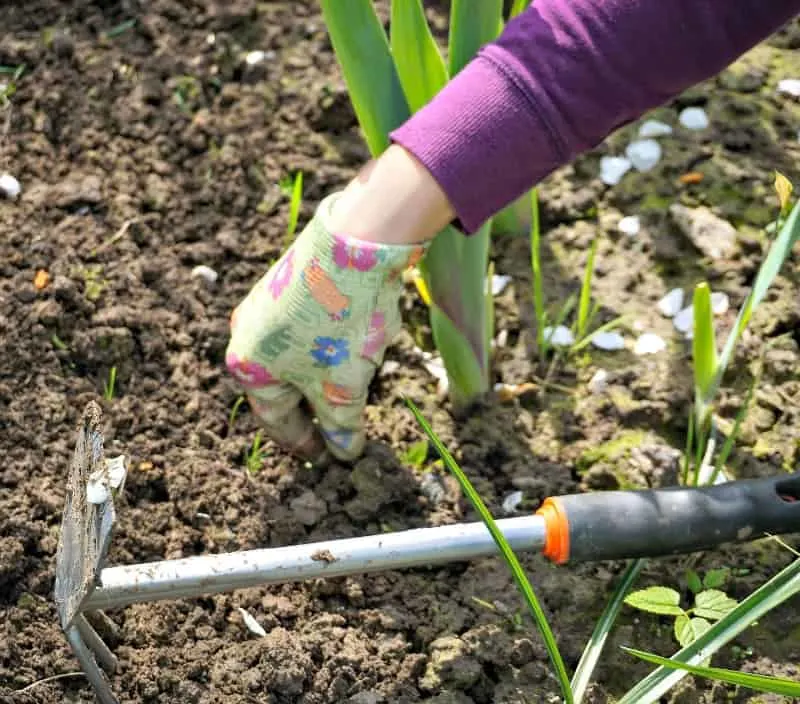
What are weeds?
Weeds are simply plants that grow where you don’t want them. They are a plant we haven’t found a use for, or, a desirable plant growing in the wrong place.
Domesticated plants can fit this description, too.
There are lots of thugs that you plant and regret later. Often, the native plants that grow wild in the area where you’re gardening can get out of hand in the lush, nutrient-rich soil that you’ve developed for growing vegetables.
Before you can get rid of weeds in your garden, you will need to understand a few things about plants and soil.
The type of soil you have is important because some plants thrive in one environment while others need a different type of soil or drainage. And sometimes your garden will improve because the weeds help your vegetables or flowers grow.
One person’s weed is another person’s flower or salad. (“Salad?” you say. Yes, several weeds are edible!)
For instance, nettles are full of nutrition, containing a wealth of trace elements, and are delicious in tea or as a soup. And early season dandelions make a great salad.
Other weeds in your garden that are edible are clover, daisy, ground elder, and chickweed, but before taking the plunge into eating your way through your overgrown vegetable plot, seek some advice. Some are only good to add to the compost.
How to Get Rid of Weeds
I recommend that you get rid of weeds naturally, meaning without chemicals. There are five ways to get rid of weeds.
Weeding may not be everybody’s favorite job in the vegetable garden plot, but it should be.
If you grow vegetables, you need to keep them mostly weed free, otherwise your vegetables will have to compete for light, water and nutrients, and they will suffer in some way.
Weeding a vegetable garden will eliminate competition in the soil so your vegetable plants will thrive and reward you for your time – meaning you’ll get more beautiful home-grown vegetables.
Learn more about how to get rid of plants you don’t want in your garden.
Five Ways to Get Rid of Weeds in Your Garden
1. Cutting
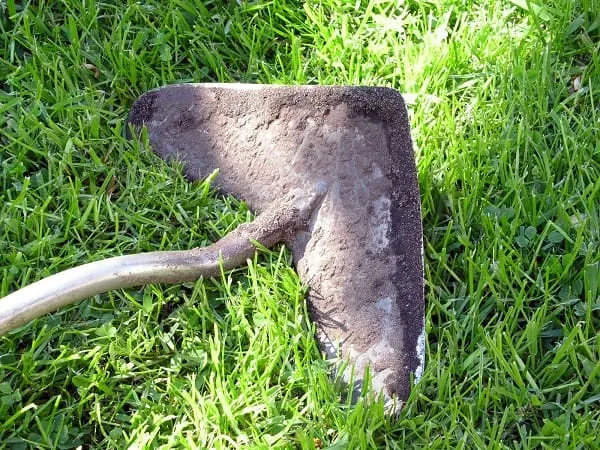
Like the homesteaders and farmers of yesteryear, you can hoe or chop most types of weeds to remove them from your garden. Lots of experienced gardeners support hoeing. It’s quick and easy, and when done regularly, it stops any weed seedlings from establishing.
The tools you would use are:
If you are going to follow the hoe method, the best type of hoe to use would be a push or thrust hoe like the Dutch hoe. Other effective hoes are the stirrup hoe and the collinear hoe.
You will need to keep the blade of the hoe sharp, and just by sliding the blade up and down the surface of the soil, any young seedlings are stopped before they can root properly.
If you hoe on a hot day, a side benefit is that any weeds that survive the action of the hoe will usually wither away in the sun.
2. Pulling
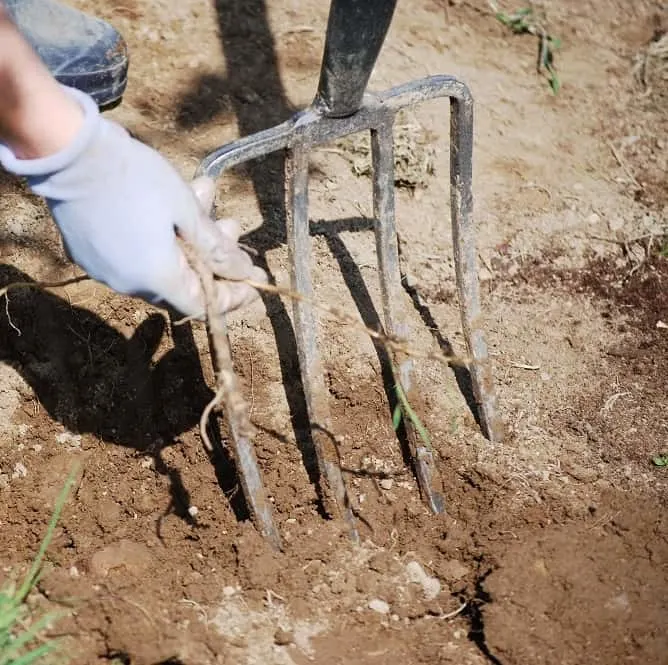
Of course, you can don a pair of gloves and hand pull weeds from your garden. Sometimes this is the best way to remove weeds if the soil is moist. However, when hand weeding, you need to remove the whole root of the weed to make sure that it doesn’t regrow, and a cultivator will help you to loosen the soil underneath the weed.
If you are hand weeding a vegetable garden, it is advisable to have knee pads, gloves, and a hand-held pull or draw hoe with cultivator – see it’s getting more complicated already.
Whatever your preference, hoeing or hand weeding, this is a job that you will need to do regularly in your plot, so try both methods to see which one you prefer.
Of course, there are vegetable garden barrier methods that can help to eliminate a lot of weeds, but no matter what method you use to control weeds, nothing is guaranteed.
Make sure to get the kids involved in pulling weeds.
3. Covering (also called occultation)
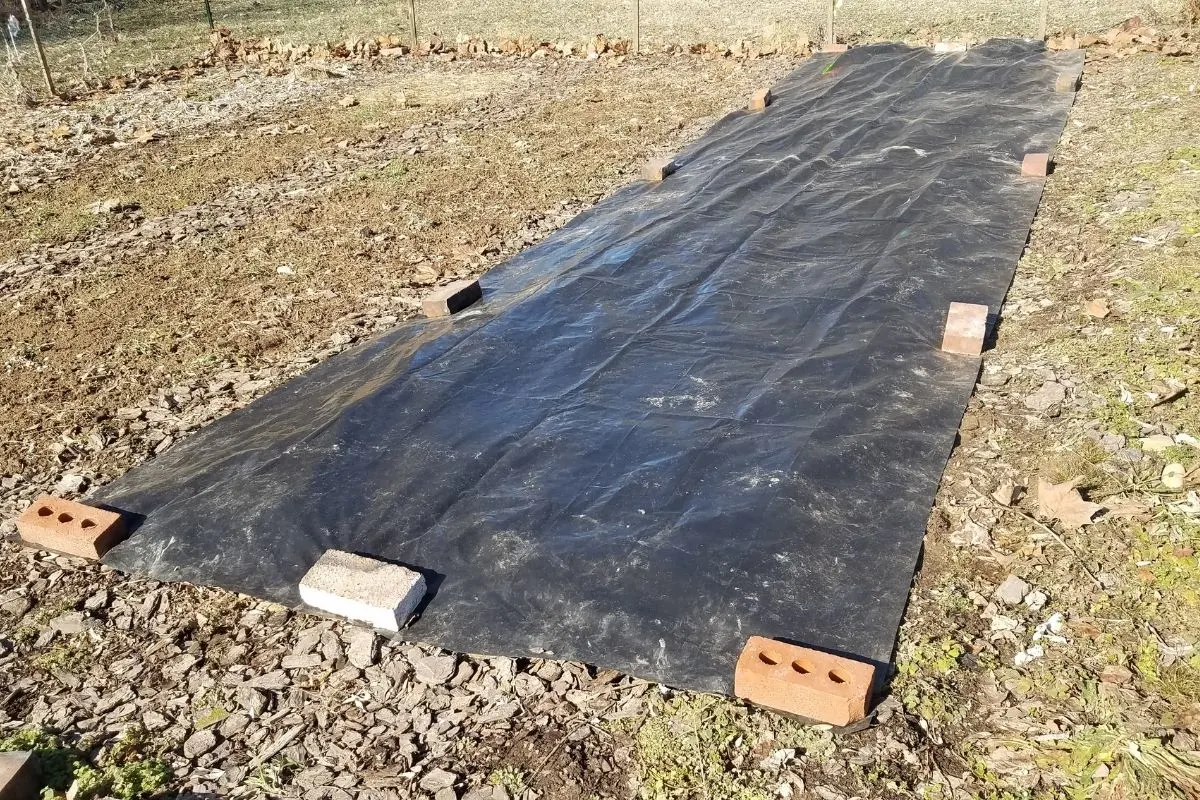
Some weeds, such as orchard grass, are easier to remove if you deny them light. Cover with a dark pot or black plastic sheeting to kill them. You may notice commercial strawberry farms using plastic sheeting between rows. Obviously, this is effective to control weeds.
The two main disadvantages to this method are that plastic sheeting can be expensive if you have a large garden and keeping the sheeting in place may be difficult.
Learn more about occultation in the garden.
Can I put landscape fabric over weeds?
4. Burning
Another way to weed a vegetable garden plot is fire. This is a good way to get rid of stubborn weeds.
This may sound extreme, but if you are preparing a bed and you want to clear all the vegetation, you can use a brush cutter to cut down the larger weeds, and then use a flame thrower attachment to a propane bottle to clear the weeds. You have to get the soil very hot to kill any roots, and as you do, you will hear a multitude of seeds popping away.
It is an effective form of weeding, but it can only be used when first clearing the plot, and cannot be used after you plant your vegetable garden.
However, you may need a burning permit in your community to use this method to eliminate weeds.
The environment will thank you for using this slash and burn technique as an alternative to using chemical herbicides.
5. Organic Weed Killer
BioSafe Weed Control Concentrate – 1 Gallon – Non-Selective Herbicidal Soap – Weed Killer – OMRI Listed – Organic – EPA Registered. Safe for People, Pets and the Environment. There are organic weed killers that you can safely use on weeds in your vegetable garden. They help you get rid of weeds naturally.
There are organic weed killers that you can safely use on weeds in your vegetable garden. They help you get rid of weeds naturally.
Salt makes a good barrier chemical and white vinegar is effective on tap root plants such as dandelion, doc, and chicory. Boiling water is also a good way of killing individual weeds.
There are some sprays on the market that use citrus acids and oils, which are fast-acting and completely harmless.
You could even make your own. Mix vinegar, lemon juice or citric powder additive, a little gin – buy the cheap stuff, not the gin you put in an evening drink! – and some liquid dish detergent, all diluted with water. Spray it on the plants and wait for them to die.
Should you be spraying?
I do not recommend using chemical sprays on your garden.
The first thing to understand is that not all weed killers will do the same job, and there are a number of types of classification of these chemical herbicides.
Weed killers can be contact or residual.
Contact weed killers usually kill systemically by entering through the leaves and traveling throughout the plant to destroy each part, this type of weed killer purportedly has no effect on the soil.
Residual weed killers need to be available in the soil so the chemical can destroy the weed’s roots, which means they affect both the plant and the soil it is growing in.
Weed killers can also be selective or non-selective, meaning they will either kill all plants they contact, or they only kill certain types of plants.
The most popular weed killers are Roundup, Weedol, and Pathclear. Roundup is a contact, systemic non-selective weed killer, Weedol and Pathclear are residual non-selective weed killers.
Chemical Weed Killer, or Organic?
A recent research finding glyphosate in breast milk should scare anyone away from thinking of this as a harmless way to weed your garden.
The growing prevalence of auto-immune disorders, autism and allergies may be connected to the number of toxins and chemicals in our environment.
Take the high road, resist the urge to use this method.
Identifying Weeds
Now that you know how to control weeds and how to get rid of weeds naturally, let’s talk about specific weeds and soil types.
When you first look at the land that you are considering converting into a vegetable garden, before thinking about how to get rid of weeds in your garden, try to identify the weeds that are flourishing and dominating the plot.
It is not important to distinguish every weed that is growing there, as often birds and other animals drop random seeds that may successfully germinate but not flourish. You are only interested in the weeds in your vegetable garden that look strong and have established themselves over many seasons.
Weeds in your garden can tell you a lot about the soil and are often good indicators of what type of vegetable growing conditions you have.
Common weeds include clover, couch grass or quackgrass, daisy, greater plantain, creeping buttercup, chickweed, stinging nettle, and orchard grass. Some others that you might encounter are thistles, shepherd’s purse, mullein, Yorktown onion, and pigweed.
What is clover?
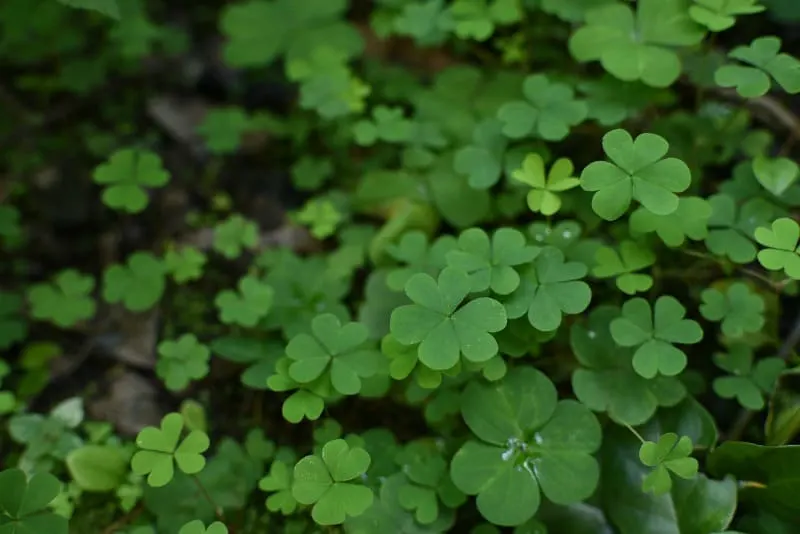
Clover is a common lawn weed that is part of the legume family.
Its Latin name is Trifolium, or trefoil from the words “tres” meaning three, and “folium” meaning leaf, and all clover has that distinctive three-leaf structure.
Don’t be in a hurry to get rid of clover; it is related to the pea and pulls nitrogen from the air adding it to the soil as a natural fertilizer.
The dreaded couch grass
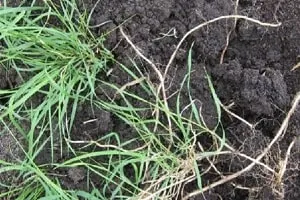 Also known as dog grass, quackgrass or quitch grass, most gardeners are sure couch grass was sent to torment us.
Also known as dog grass, quackgrass or quitch grass, most gardeners are sure couch grass was sent to torment us.
It easily spreads through its creeping roots known as rhizomes, and no matter how well you think you’ve weeded, if one tiny rhizome is missed, another plant will quickly appear.
Particularly if the ground is hard and dry, you can spend hours and days on your hands and knees trying to pull every root. Inevitability you will miss a few roots and new plants sprout overnight.
In good soil, with lots of organic matter, you can pull out the whole plant, but it won’t stop them from invading again if you have a grass path.
Sometimes wooden edges on the vegetable plots will stop the couch grass from creeping into the beds.
Daisy, one of the pretty, edible weeds
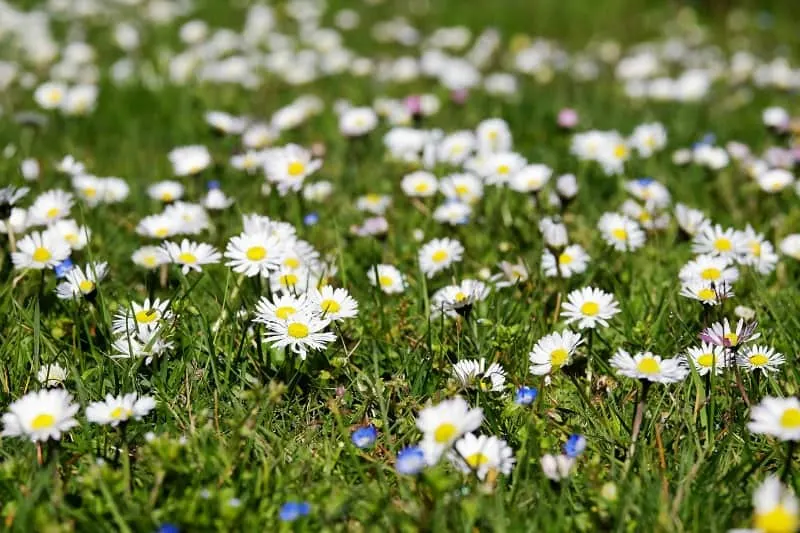
There are many types of daisy, but the one that we would be more concerned about would be lawn daisy, also known as common or English daisy, and like the creeping couch grass, it spreads with rhizome roots.
Methods such as no-dig gardening or lasagna beds, as well as barriers such as a framed bed, will help to control daisies. One approach to get rid of daisy is to use a knife to put cuts through the plant each week. This will weaken it and then it can be lifted or dug out.
Another way to deal with the daisy is to pick its flowers and use them in salads. They are edible and if they are attacking your garden, at least you can get a free meal out of them.
Dandelions
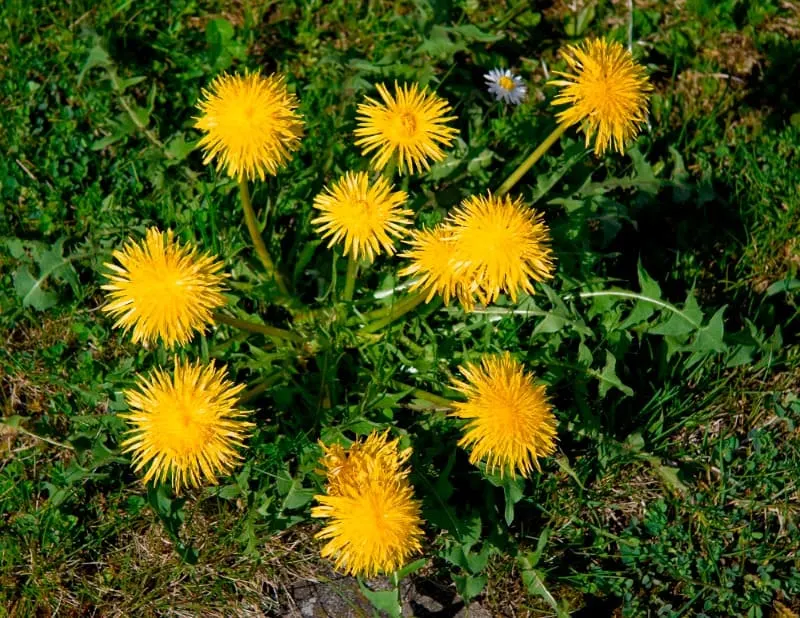
The dandelion is probably one of the most recognizable of the vegetable garden weeds, and there are not many gardens that are free of this weed. This is probably due to the effective way the dandelion spreads its seeds, and, of course, children everywhere love to help out by blowing the seed “fairies” into the wind.
This weed sends down a long tap root so to remove it, dig down deeply before pulling it out. Or take the edible approach as the new leaves are an excellent salad leaf.
Greater plantain and dock
These two weeds are recognizable plants that are easy to deal with. Just like dandelion, they send down a long tap root. Dig down to pull out these vegetable garden weeds.
Here’s an interesting fact. Plantain is known as “White Man’s Footprint” because it followed the migration of pioneers. It is used medicinally in tinctures and lotions for rashes and other skin issues.
Creeping buttercup and chickweed
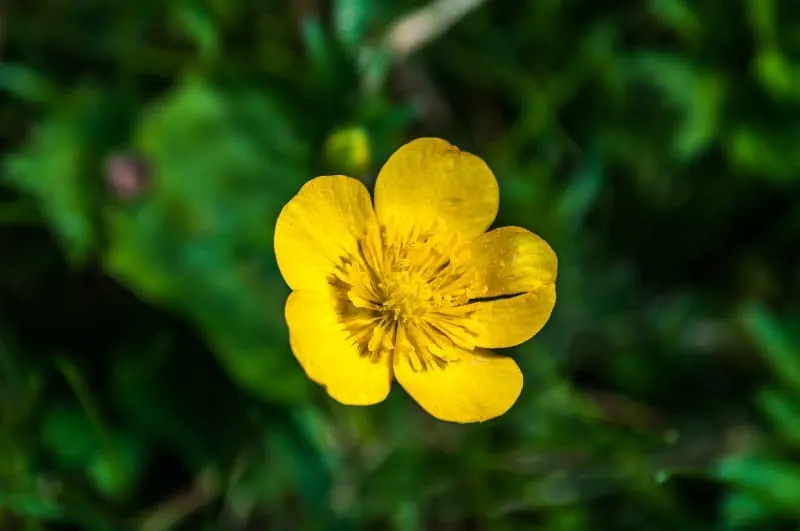
The buttercup is easy to identify with its bright yellow flowers. The creeping buttercup weed spreads by sending out runners that root, so mulching will help to smother it. Do not eat this weed; it can make you sick.
Chickweed has white flowers, spreads like a mat, and is edible. It is best to dig it out of the vegetable garden plot when young.
Hoeing can help to control creeping buttercup and chickweed.
Stinging nettles
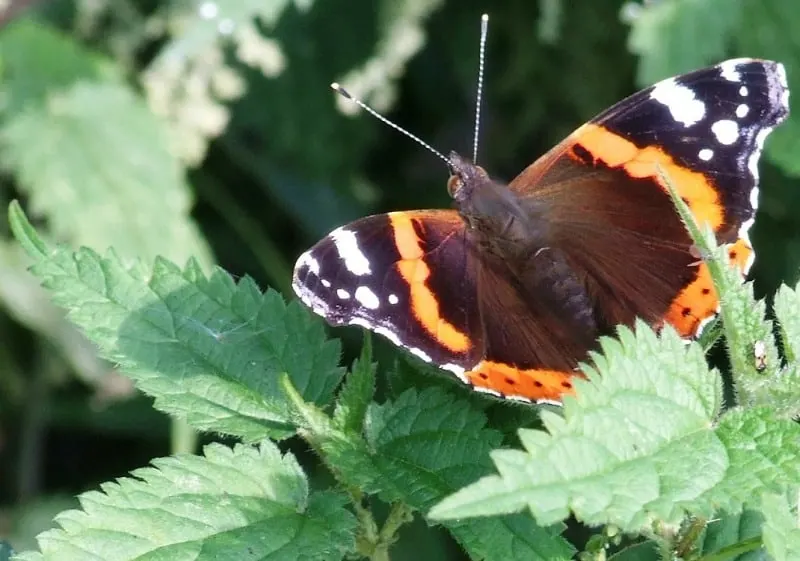
You probably know how to recognize stinging nettles. If you don’t, you’ll quickly learn: touch them once and bear the brunt of their protective spines.
Nettles can grow anywhere but prefer rich, recently disturbed ground, which is why they are one of the first plants to establish on a disused industrial site.
The reason they prefer a disturbed site is that often when the ground has been deeply worked, previously locked up nutrients, particularly phosphorous, are released from the subsoil. This rich soil is exactly what nettles need.
Much like couch grass and daisy, to control stinging nettles you will need to dig up all the roots, as it spreads using rhizome roots. Missing even the smallest part of the root will allow it to regrow.
In the vegetable garden it’s not that difficult to get under control, but if you have the room, it is worth growing.
Here’s a list of other plants you might want to grow in your garden.
Stinging Nettles are full of nutrients, whether you eat them yourself or you use them as a fertilizer. For your vegetable plants you can either use its leaves as a mulch or you could add stems and leaves to the undersoil of a vegetable plot, the nettles will release nitrogen as well as some valuable trace elements.
You could even cut down the nettles and soak them in a large container of water to use as a liquid fertilizer.
Be sure to use gloves when handling stinging nettles, so you don’t get nettled by the stems and leaves.
Orchard grass
There are some plants that are useful in one place but not in another, like orchard grass. It is beneficial to orchards, but in a vegetable garden it can make gardening difficult.
To control orchard grass, stick a black plastic nursery pot upside down over the plant to deprive it of light, making it easier to dig up.
What do weeds tell you about your soil condition?
Every garden is different, including the weeds that it battles.
Surprisingly, all weeds have a use, whether it’s to break up the hard packed soil, take up nutrients from deep in the soil with a tap root, or hold the soil in place when it rains. They aren’t just a nuisance.
Never ignore your vegetable garden weeds; they can tell you a lot about your soil. Once you start to get on top of them, as long as you do a little weeding often, you can easily manage any weed onslaught.
What will the weeds that you identify tell you about the growing conditions in your future vegetable plot?
Soil density
There are three types of soil densities, two of which may be concerning, and two types of soil makeup that you’ll need to be aware of.
The three soil densities are heavy, medium and light. Heavy is solid clay soil; light is dry, sandy soil; and the medium is a soil that is somewhere in between these two types of soil.
The remedy for these soil types would be the addition of organic matter and sharp sand to heavy soils and the addition of compost and manure to sandy soil to give it more body.
Is your soil alkaline or acidic?
The soil makeup could be sour or sweet, sour being acidic and sweet being alkaline. The measurement of acidity or alkalinity is recorded by the PH scale. A neutral soil will measure 7; below 7 is acid and above 7 it is alkaline.
Knowing your soil’s PH is important because if it is outside the range of 6 to 7.5, most plants will struggle because the phosphorus that is essential for growth will be locked in the soil.
The majority of vegetable plants prefer a neutral to alkaline soil and to adjust a soil from acid to alkaline you would add a dressing of horticulture lime.
But that doesn’t mean that if you have acid soil all is lost, as vegetables such as radishes, parsley, peppers, rhubarb, and potatoes thrive in more acidic soil.
Your Weeds Talk to You
So what do weeds in your vegetable garden tell you about your soil?
Dock, dandelion, daisy, clover, and buttercup are a sign that your soil is heavy.
Cornflower, mayweed, stinging nettles, common marigold, white campion, and bindweed are all signs of light soils.
Bracken, sorrel, knotweed, clover, and common marigold prefer acid soils.
Goosefoot, white mustard, salad burnet, thistle, and true chamomile prefer alkaline soil.
Horsetail prefers wet conditions, as does buttercup and silverweed.
But the fact that there are weeds in your vegetable garden isn’t necessarily bad news.
Stinging nettles are a sure sign that you have high levels of nutrition in the soil, and cut and wilted leaves make a great addition to your compost heap. Their leaves are particularly high in nitrogen and also make a great liquid fertilizer.
As a legume (the same family as beans and peas), the clover draws nitrogen from the air in root nodules and disperses it into the soil.
Although weeds can tell you something about your vegetable garden plot, other than a few weed heroes, you will likely want to control or remove them. I hope this helped you learn how to get rid of weeds and understand more about their effect on your garden.
How to get rid of specific weeds
- how to get rid of pokeweed
- how to get rid of Johnson grass
- how to get rid of buttercups in the lawn
- how to get rid of tree of heaven
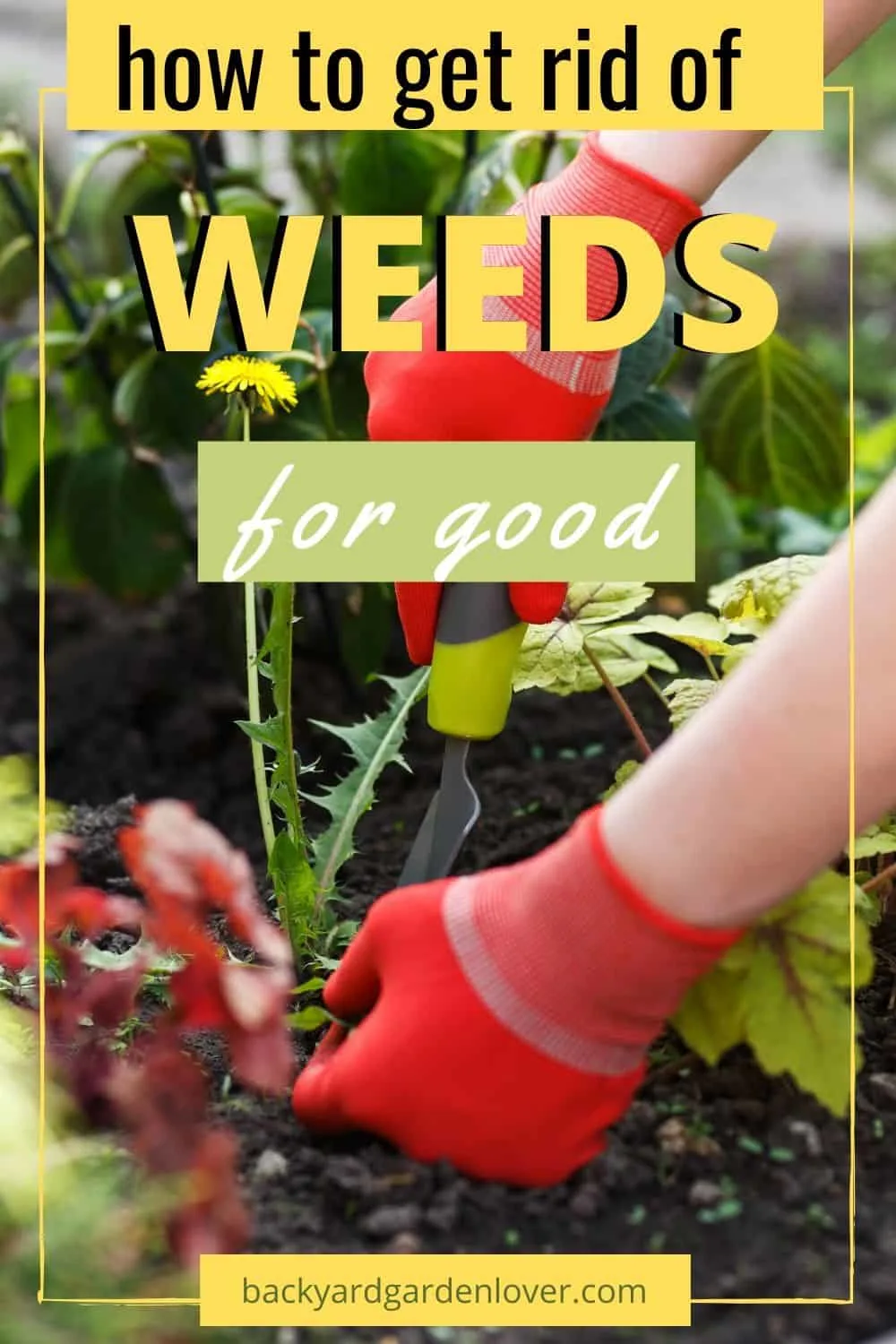



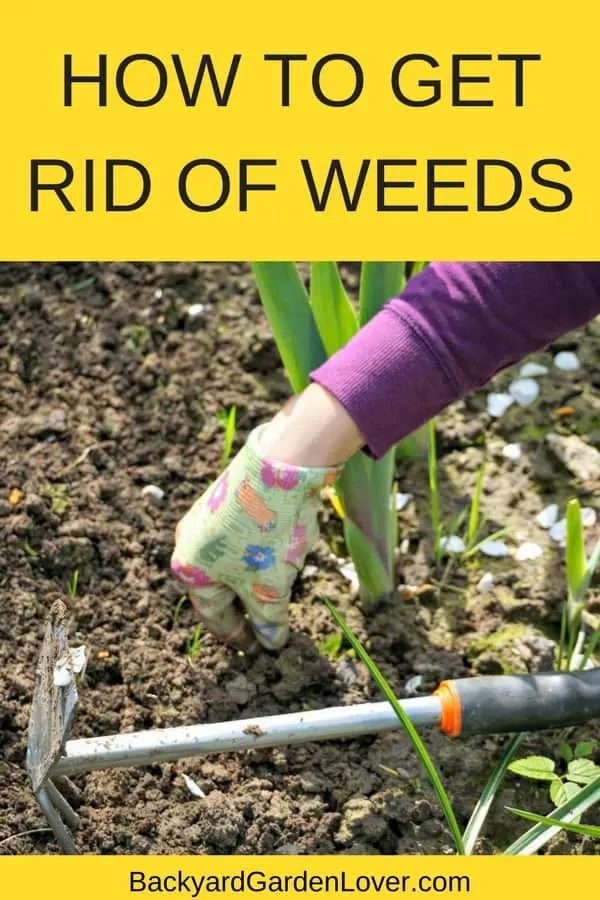
9 Best Gardening Gifts For Father's Day
Tuesday 23rd of August 2022
[…] vegetable gardens have all been planted by the time Father’s Day has arrived, weeding, watering, fertilizing, and harvesting go on throughout the season. Give dad the gift of time by […]
How To Get Rid Of Blister Beetles
Tuesday 2nd of August 2022
[…] favorites, so give some special attention to those specific plants when weeding your garden. Keeping weeds to a minimum in general tends to discourage pests by removing a potential source of cover and food, so you might […]
Occultation In Gardening: No-Till Bed Preparation In 4 Easy Steps
Friday 18th of February 2022
[…] occultation to prepare beds before the growing season as well as to kill weeds when you have at least three weeks between harvesting one crop and planting the […]
20 Creative Gardening Gifts For Women That Will Make An Impression
Thursday 16th of September 2021
[…] digging out stubborn weeds […]
15 Must Have Gardening Tools For Serious Gardeners {Buying Guide}
Thursday 29th of April 2021
[…] one or two on hand for planting annuals, small perennials, vegetables, and herbs, as well as for digging out stubborn weeds. Spend a little extra money on a sturdy long-lasting trowel from a company like Wilcox (this trowel […]